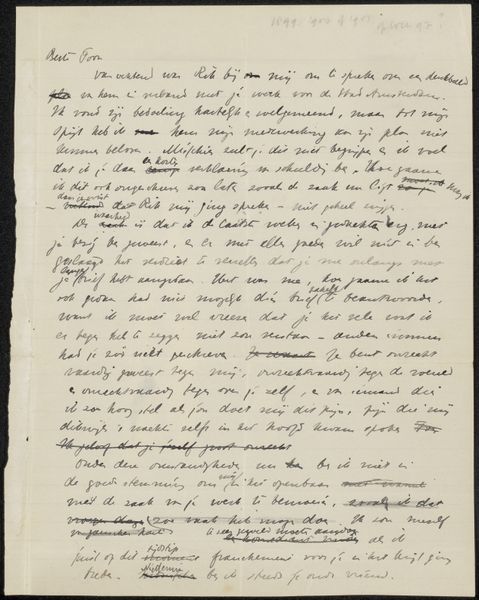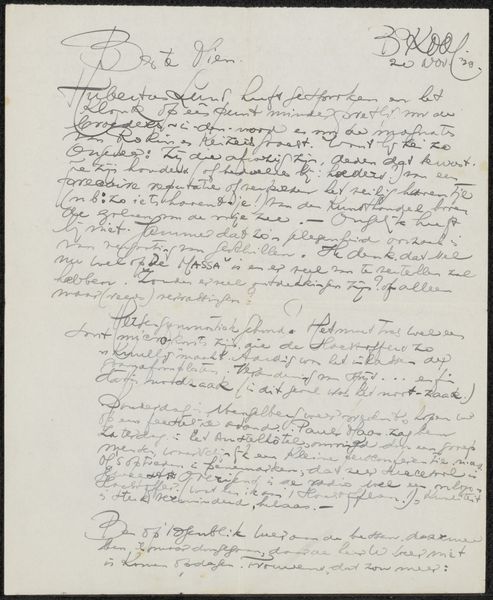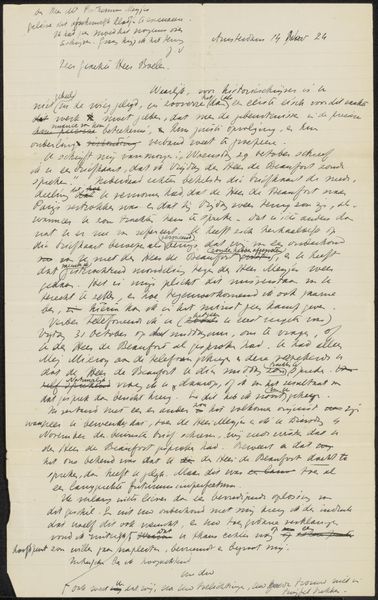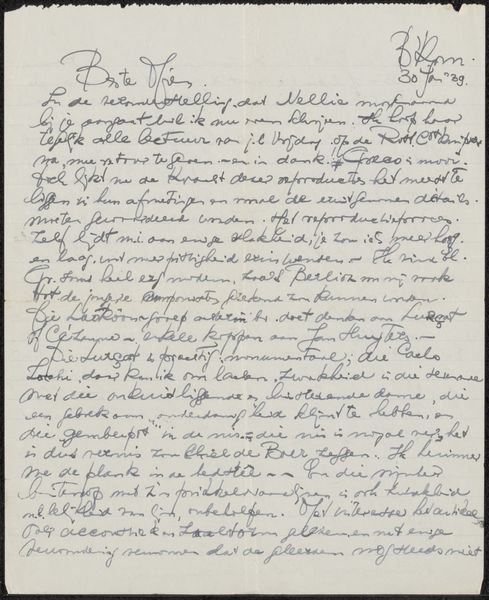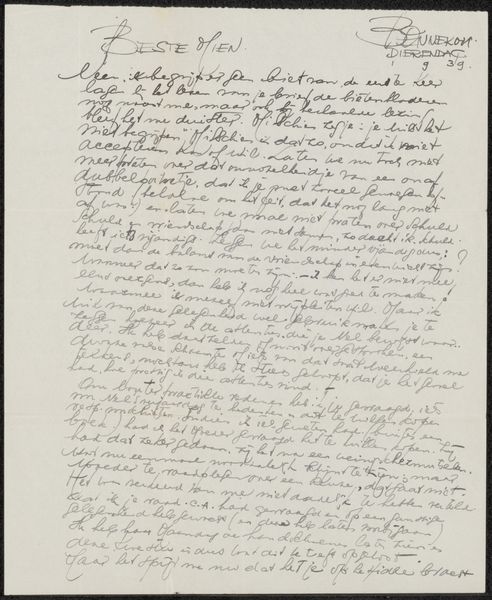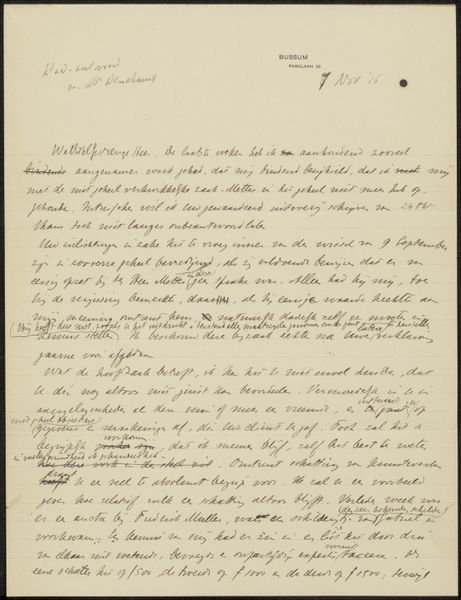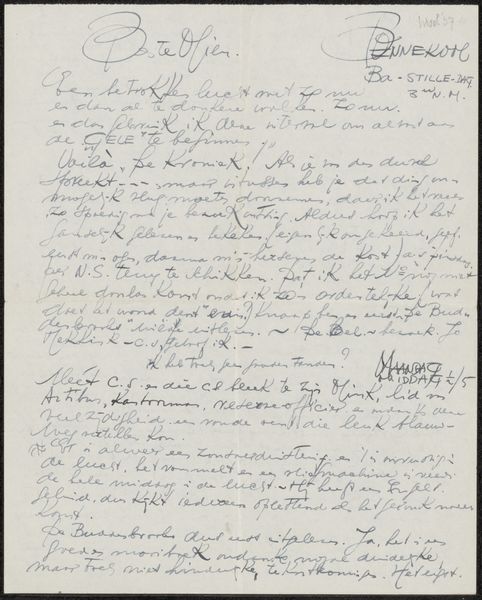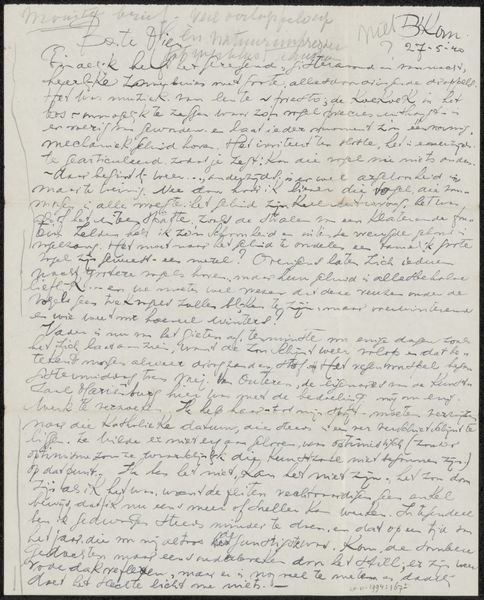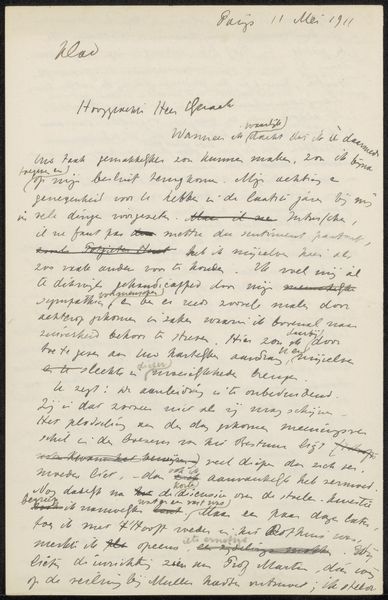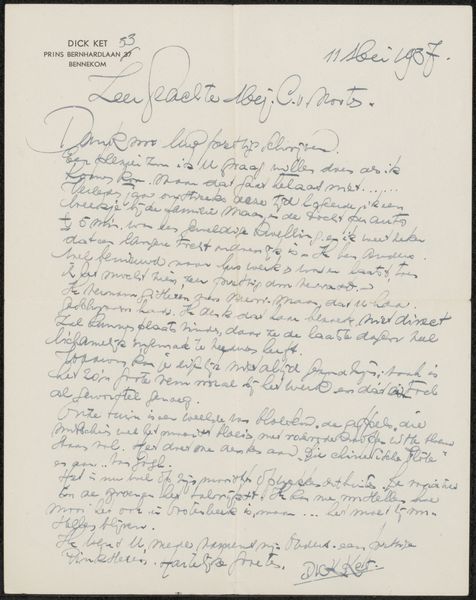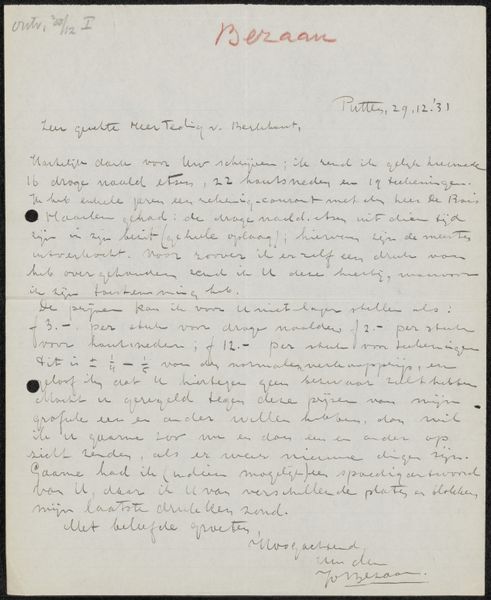
drawing, paper, ink
#
drawing
#
hand-lettering
#
hand drawn type
#
paper
#
ink
#
monochrome
Copyright: Rijks Museum: Open Domain
Curator: Here at the Rijksmuseum, we have Jan Veth's "Conceptbrief aan Henri Pierre Leonard Wiessing," believed to be from 1925, a handwritten note in ink on paper. Editor: My first thought? It’s densely packed—so much text crammed onto one page, creating a sense of urgency or importance. It’s all monochrome, heightening that documentary feel. Curator: Indeed. Veth, a prominent figure in the Dutch art world, likely drafted this as a working document, judging from the handwritten corrections and cross-outs. Consider the material aspect: ink, paper, handwriting—the physical effort of creation versus the ease of mechanical reproduction. Editor: Absolutely. I find it revealing that it’s addressed to Wiessing, himself a figure known for bridging art and politics. The density could reflect the societal anxieties and intellectual fervor of the time. Look at the handwriting—hurried, but deliberate—a testament to the weight of communication during a period of intense social change and perhaps artistic innovation. Curator: The means of production are critical to understanding its significance. The lined paper implies a certain bureaucratic or administrative setting, suggesting perhaps that this communication pertains to institutional affairs or a commission. Editor: I see the materiality speaking to class, access, and even privilege. Who had the time, education, and resources to engage in such handwritten correspondence? And how might that impact the message itself? Was this intended for public record, or was its circulation deliberately limited? These are the kinds of questions that open it up. Curator: Precisely. Examining this “concept brief” not just as an aesthetic object but as a physical artifact of labor reveals much about artistic and intellectual production. The crossings out and revisions, like traces of thought made manifest. Editor: This pushes us to reconsider notions of artistic genius or inspiration. Instead, we focus on the materiality of this exchange, connecting the hand of the author with larger sociopolitical discussions, such as Dutch monument culture at the time. Curator: Exactly. Appreciating this humble piece of paper enriches our understanding not only of Veth’s creative process but also of art-making within its historical and material conditions. Editor: In the end, it serves as an insightful lens through which to interpret both artistic expression and a certain world in flux.
Comments
No comments
Be the first to comment and join the conversation on the ultimate creative platform.
